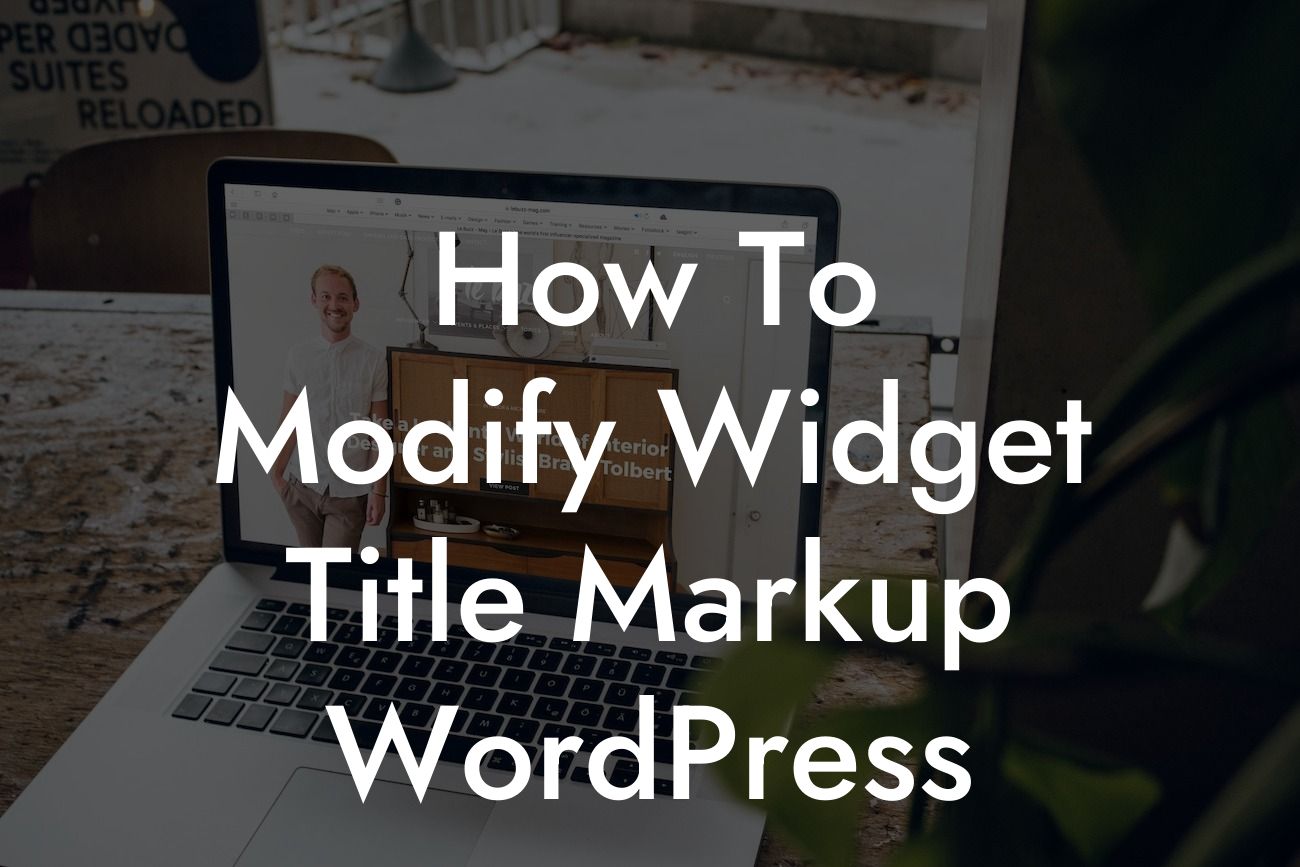Are you a small business owner or an entrepreneur looking to enhance your WordPress website? One of the key elements that can make a significant impact on your online presence is the widget title markup. In this article, we will guide you through the process of modifying the widget title markup in WordPress, empowering you to take control of your website's appearance and functionality. Discover the extraordinary possibilities that DamnWoo's plugins can offer and say goodbye to generic solutions.
Widgets play a crucial role in organizing and displaying content on your WordPress site. They allow you to add various elements, such as menus, search bars, and promotional banners, to specific areas of your website. However, the default widget title markup in WordPress might not always align with your desired design or branding objectives. That's where customization comes into play.
To modify the widget title markup, follow these steps:
1. Identify the existing widget title markup:
It's essential to understand the current structure of the widget title markup to make effective modifications. Inspect the HTML code of a widget title using your browser's developer tools. Look for the class or ID associated with the widget title element.
Looking For a Custom QuickBook Integration?
2. Create a child theme:
To ensure that your modifications are not overwritten during theme updates, it's highly recommended to use a child theme. If you are not using a child theme yet, create one following WordPress guidelines.
3. Locate the appropriate template file:
Next, locate the template file responsible for rendering widgets. Typically, it is the `widgets.php` file within your theme's directory. Copy this file to your child theme folder, preserving the same directory structure.
4. Modify the widget title markup:
Open the copied `widgets.php` file using a text editor. Look for the function related to the widget title markup, which might vary depending on your theme. Generally, it will be named something like `widget_title()` or `the_widget_title()`.
Within the function, you can make necessary modifications to the HTML structure of the widget title. Add suitable H2 or H3 headings, bullet point lists, or ordered lists to match your desired formatting.
5. Save and upload the modified template file:
Save the modified `widgets.php` file and upload it to your child theme folder. Ensure that the file path remains the same as in the original theme.
How To Modify Widget Title Markup Wordpress Example:
Let's consider a practical example to illustrate the modification of widget title markup. Suppose you have a small business website selling handmade jewelry. The default widget title markup in your theme uses generic H4 headings, which don't align with the elegant and refined image you want to portray.
By modifying the widget title markup, you can easily enhance the appearance of your widgets' titles. You can change the widget titles to display H2 headings adorned with custom fonts and colors that resonate with your brand's identity. This simple modification can make a significant difference in elevating your online presence and capturing the attention of your potential customers.
Congratulations! You've learned how to modify widget title markup in WordPress effectively. By customizing the appearance of your widget titles, you can create an extraordinary online experience for your website visitors. But why stop here? Explore the other engaging guides on DamnWoo's platform to unlock even more WordPress tips and tricks. Take your small business or entrepreneurial venture to new heights by trying one of our awesome plugins. Don't forget to share this article with others who can benefit from it. Together, let's make your online journey remarkable!
(word count: 726)













